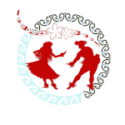
Samoa, an island nation in the heart of Polynesia, is renowned for its rich cultural heritage, which includes its vibrant traditions in music and dance. Music in Samoa is deeply intertwined with daily life, ceremonies, and storytelling, serving as a cornerstone of communal identity and cultural preservation. The instruments used in traditional Samoan music are not only tools for creating sound but are also deeply symbolic, reflecting the relationship between the Samoan people and their environment.
This article delves into the traditional instruments of Samoa, exploring their construction, use, and cultural importance.
1. The Pātē: A Rhythmic Heartbeat
The pātē is perhaps the most iconic Samoan traditional percussion instrument. It is a type of slit drum, carved from a single piece of hardwood, often from the ifilele (Pacific mahogany) tree. The instrument’s design consists of a hollowed-out body with a long slit running along its length.
Construction and Play
The pātē comes in various sizes, with each producing a distinct pitch. Players use mallets or sticks to strike the edges of the slit, creating resonant, hollow tones that range from high and sharp to deep and booming. The sound is influenced by the size and thickness of the drum as well as the force of the strike.
Cultural Role
In Samoan culture, the pātē is central to traditional dances such as the siva and the fa’ataupati (the slap dance). Its rhythms guide performers, creating an energetic atmosphere and uniting dancers and onlookers. The instrument is also used to signal important events or summon communities, reflecting its role as a unifying force.

2. The Logo: Resonating with Simplicity
The logo is a smaller, handheld percussion instrument made from a hollowed-out log or bamboo. It is one of the simpler instruments in Samoan music but plays an essential role in maintaining rhythm.
Construction and Technique
Carved from lightweight wood, the logo is played by striking it with a stick or hands. The simplicity of its design allows for quick construction, making it accessible to most community members.
Cultural Function
The logo often complements the pātē in ensemble performances, adding texture to the rhythmic foundation. It is frequently used in informal gatherings and celebrations, underscoring the communal spirit of Samoan music.
3. The Fala: The Mat Drum
Another unique percussion instrument in Samoa is the fala, a type of drum made from rolled mats of pandanus leaves. Its design highlights the ingenuity of Samoan craftsmanship and resourcefulness.
Construction and Play
The fala is crafted by tightly rolling a woven pandanus mat into a cylindrical shape. The player strikes it with bare hands or wooden sticks to produce a muffled, deep thudding sound.
Cultural Significance
The fala is primarily used in ceremonial contexts, where its subdued tones provide a contrast to the sharper notes of the pātē. Its presence in rituals underscores its spiritual importance, often accompanying chants or oratory performances.
4. The Conch Shell (Pu)
The conch shell, or pu, is a wind instrument with a distinctive, resonant sound that has been used in Samoa for centuries.
Construction and Technique
The pu is made by cutting off the tip of a large conch shell to create a mouthpiece. The player blows through this opening, producing a deep, mournful tone that can carry over long distances.
Cultural Role
Traditionally, the pu was used as a signaling instrument, announcing significant events, such as the arrival of a chief or the beginning of a ceremony. Its sound is often associated with the ocean, linking the Samoan people to their maritime heritage.
5. Traditional Singing and Vocal Accompaniment

In addition to instruments, traditional Samoan music places significant emphasis on the human voice. Vocal performances, often involving intricate harmonies and layered rhythms, are integral to Samoan music. Instruments like the pātē and logo serve as accompaniment, enhancing the storytelling element of songs.
Siva and Fa’alupega
Songs performed during the siva (traditional dance) and fa’alupega (genealogical chants) are accompanied by rhythmic instruments and clapping, creating a multisensory experience that connects performers and audiences.
6. Modern Influences and Preservation Efforts
While traditional instruments remain central to Samoan music, modern influences have introduced new instruments and styles. Guitars and ukuleles, brought by missionaries and traders, are now common in Samoan music, blending seamlessly with indigenous sounds. Despite these changes, efforts to preserve and celebrate traditional instruments are robust. Cultural festivals, educational programs, and the work of local artisans ensure that the legacy of Samoan music remains vibrant.
Samoan Traditional Music
The traditional instruments of Samoa—whether the resonant pātē, the simple logo, the ceremonial fala, or the evocative pu—are much more than musical tools. They are vessels of history, identity, and connection to the natural world. These instruments, alongside the powerful vocal traditions of Samoa, form a musical tapestry that continues to inspire and unite Samoan communities at home and abroad. As guardians of this heritage, Samoans celebrate their past while embracing the evolving sounds of the future, ensuring that their music remains a living, dynamic force.
